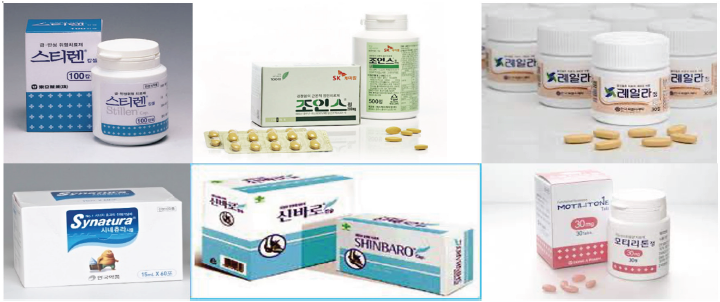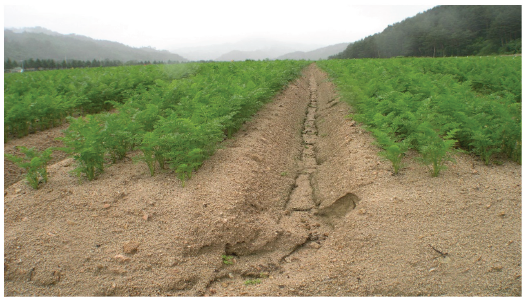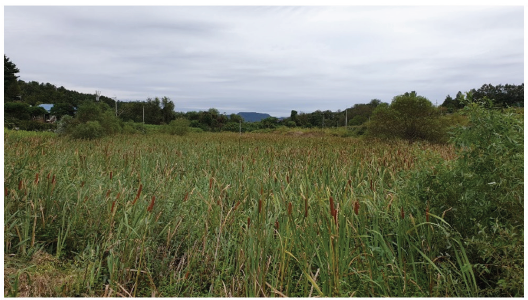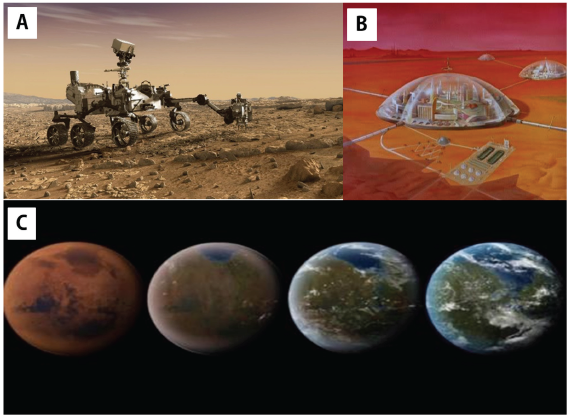서 언
우리의 행성 지구는 인구 증가(Lutz et al., 2014; Ogutu et al., 2019), 기후 변화(Nordhaus, 2019; Crosweller and Tschakert, 2020), 식량 위기(Headey, 2011; Tardieu et al., 2011), 물 부족(Masten et al., 2016), 에너지 안보(energy security), COVID-19와 같은 전염병의 확산으로 인류는 생존의 위기에 직면해 있으며(UN, 2022) 전 인류가 평화로운 일상을 살아가는 것이 점점 어렵게 되었다. 이에 따라 미래학자들은 화성과 같은 행성으로의 이주를 탐색하기에 이르렀다.
이러한 지구의 문제를 해결하는데 있어서 우리 한국잡초학회에서도 인류에 기여하는 연구를 수행해야 함은 과학자로서의 사명이라고 할 수 있다. 그런데 한국잡초학회 회원들의 면면을 보면 대부분이 잡초를 방제하는 연구를 수행하고 있다. 물론 잡초생태학자들이 없는 것은 아니나 생태학 본연의 연구보다는 잡초 분류 등의 연구를 수행하고 있음은 모두가 알고 있는 사실이다. 한국잡초학회에 소속된 대부분의 연구자들이 잡초를 정의함에 있어서 "적절하지 못한 장소에서, 적절하지 못한 시기에, 원하지 않았음에도 불구하고 자라는 식물(Kim et al., 1999; Klingman et al., 1982)" 혹은 "아직까지 가치가 발견되지 않은 식물(Ross and Lembi, 1985)"이라 이해하고 있을 것이다. 잡초를 이와 같이 정의하는 연구자들에게 잡초의 응용 또는 활용에 관한 연구는 사실 관심 밖의 일이었다. 그러나 민간에서는 잡초를 건강 식품, 비료, 멀칭용 재료, 전통 의약품, 생물 농약, 가구 등 산업적으로 다양하게 이용하고 있으며(Lee et al., 2012; Kumar and Vishwakarma, 2005), 바이오디젤, 바이오에탄올, 바이오가스 등 바이오 에너지 생산을 위한 소재(Konwer et al., 2007)로, 그리고 국내 산업통상부 지역연고진흥사업(Regional Innovation Services)에서 민들레를 활용한 지역 경제 활성화 사례에서 보듯이 민들레를 이용하여 다양한 산업 제품을 개발하여 지역 산업체의 매출 증대와 낙후된 지역의 일자리를 창출하기도 하는 등 잡초를 활용하려는 노력은 점점 확대되고 있다.
저자들은 본고에서 잡초가 가지고 있는 다양한 형태학적, 생리학적, 의학적 이용 가능성을 발굴하여 현재 인류가 당면한 문제를 해결하는데 잡초를 어떻게 활용할 수 있는지에 대해 의견을 제시하고자 한다. 어떤 연구 분야는 당장 실생활에서 응용될 수도 있겠지만 어떤 연구 분야는 먼 미래에나 구현될 수 있어서 과학자의 입장에서는 논란거리일 수도 있다. 그러나 먼 미래에라도 잡초가 전 인류에게 도움이 될 수 있을 것을 기대한다.
의약품 개발: 새로운 질병의 출현으로부터 인류 해방
인류는 끊임없이 질병에 노출되어 왔고 수많은 희생을 치르며 진화해왔다. 현재에도 다양한 질환, 예를 들면, 염증, 면역, 대사성 질환, 호흡기계 질환, 심혈관계 질환, 비뇨기계 질환, 근골격계 질환, 신경계 질환 등으로 고통받고 있으며, 최근에는 감염성 바이러스의 확산으로 고통받고 있다. 인류는 과학이 발전되기 이전부터 질병을 극복하기 위하여 식물기원의 치료제를 개발하여 사용해 왔다. 전 세계적으로 112종 식물로부터 현재까지 개발된 의약품과 그 작용 기작을 Table 1에 나타냈다. 특별히 잡초로 분류된 식물에 대해서는 *으로 표시하였다. 한국의 전통 의학을 대표하는 의서인 동의보감에는 엄청난 수의 생물 약물이 기록되어 있으며 그 중 잡초는 57종이 기록되어 있다. 동의보감에 기록된 잡초의 의학명(일반명, 학명)은 다음과 같다 (Table 2).
|
Table 1. Action mechanism of chemicals and drugs developed from plant origin. Plants classified as weeds are marked with asterisk. 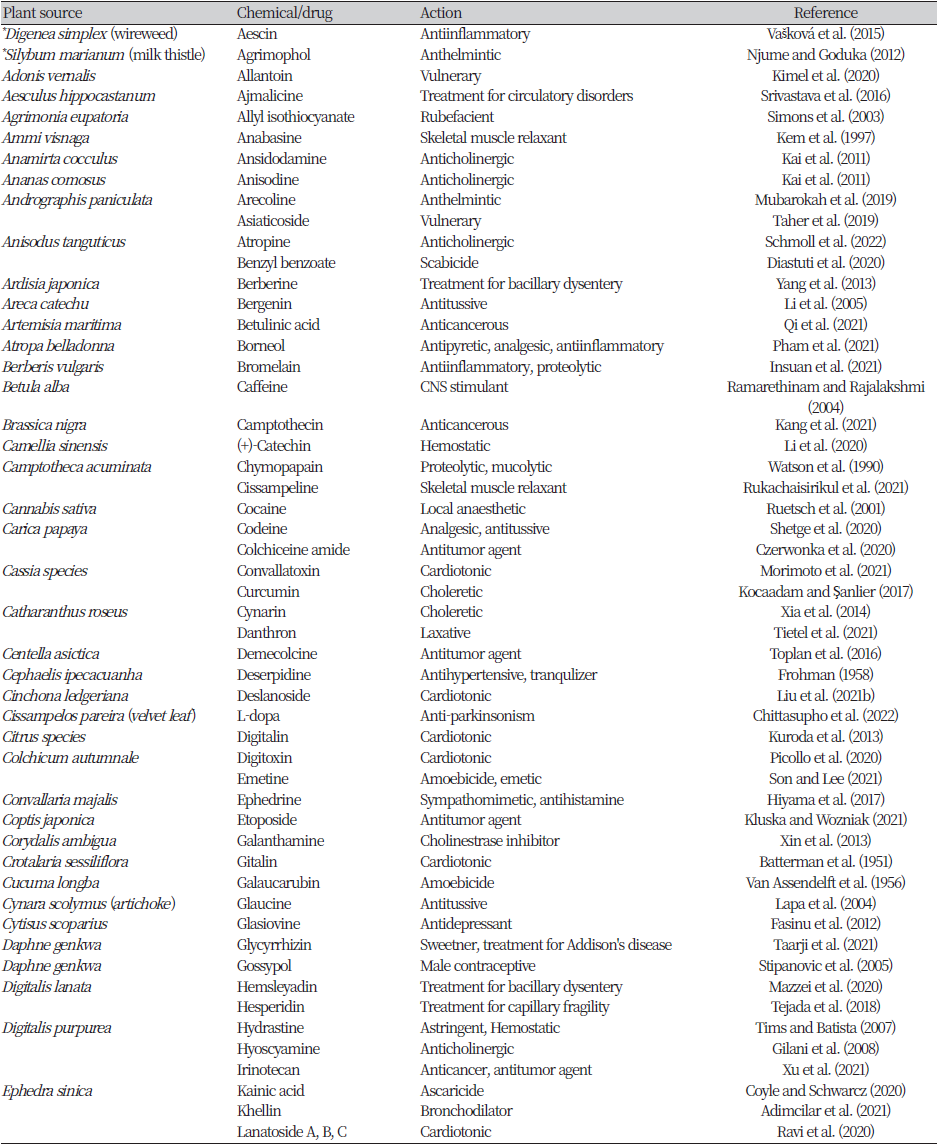
|
|
Table 1. Action mechanism of chemicals and drugs developed from plant origin. Plants classified as weeds are marked with asterisk. 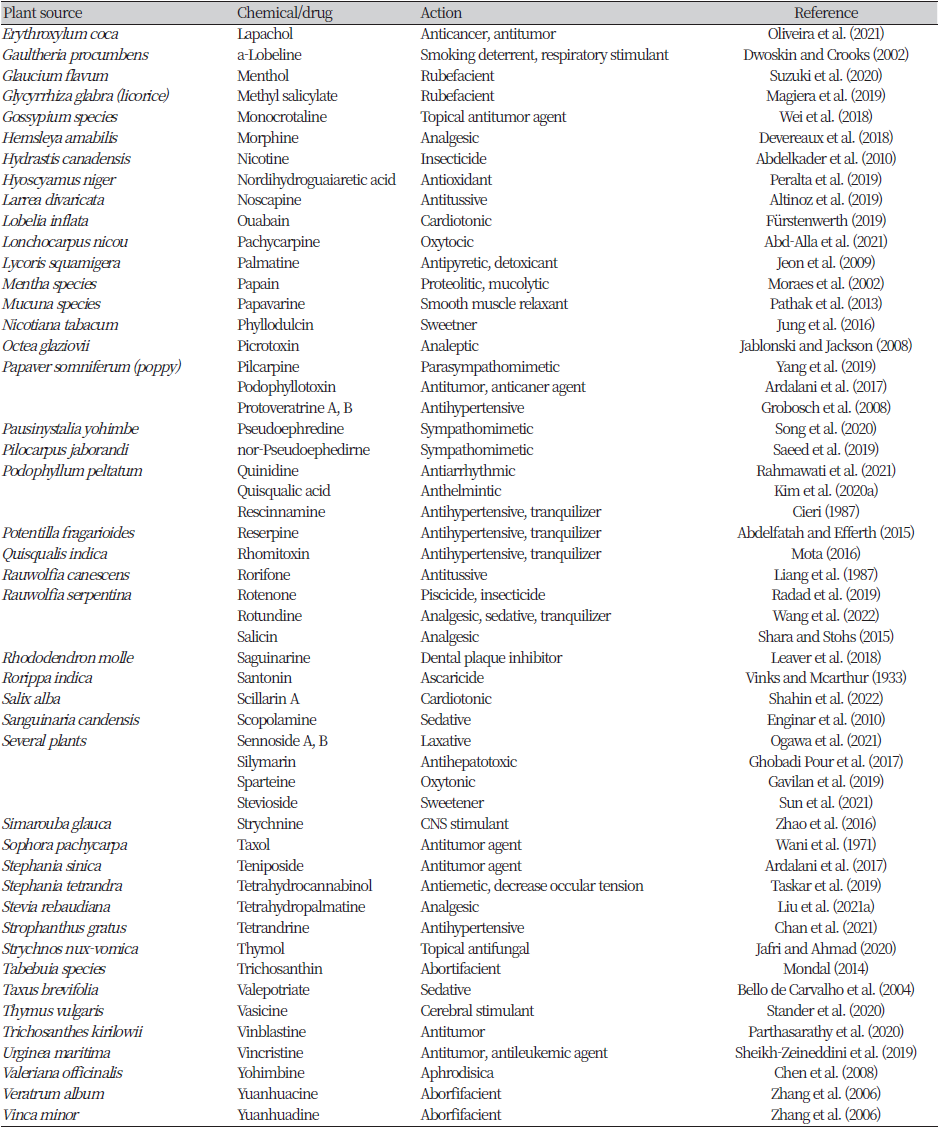
|
|
*Plants are classified to weed. |
잡초로부터 개발된 의약품의 대표적인 사례로는 중국의 투유유(Tuyouyou) 박사가 개똥쑥(Artemisia annua L.)으로부터 분리한 아르테미시닌(artemisinin)을 들 수 있다. 전 세계적으로 연간 약 100만명이 모기에 물려 말라리아로 고생하는데, 아르테미시닌은 말라리아 치료에 탁월한 효과를 보였다. 투유유 박사는 아르테미시닌을 개발한 공로를 인정받아 2015년 노벨 생리의학상을 수상하였다. 이는 잡초가 인류를 구한 대표적 사례라고 할 수 있다.
국내에서도 식물로부터 의약품이 개발된 사례가 있다. 애엽(쑥, Artemisia indica Wild.)으로부터는 위염치료제 스티렌®, 방풍(Saposhnikovia divaricata (Turcz) Schischk.)으로부터는 척추관절질환 치료제 신바로®, 황련(Coptis japonica (Thunb.) Makino)과 담쟁이덩굴(Parthenocissus tricuspidata (Sielbold & Zucc) Planch.)로부터는 진해거담 치료제 시네추라®, 현호색(Corydalis remota Fisch. ex Maxim.)으로부터 기능성 소화불량 치료제인 모티리톤®, 당귀(Angelica gigas)와 방풍(Saposhnikovia divaricata (Turcz.) Schischk.)으로부터는 골관절명 치료제인 레일라® 그리고 하고초(꿀풀, Prunella vulgaris L subsp. asiatica (Nakai) H. Hara)로부터는 퇴행성관절염 치료제 조인스®가 상용화되었다(Fig. 1). 잡초로 분류되어 있는 애엽이나 하고초로부터 의약품 개발이 성공적으로 이루어진 사례가 있으므로 국내 제약업계에서도 동의보감에 기록되어 있는 다른 잡초종을 이용한 의약품 개발 기대가 높아지고 있다(Personal Comm. 박세진 강원대학교 교수).
현재 한국잡초학회에 소속된 회원 중에는 잡초를 연구의 대상으로 의약품 개발을 하는 회원이 없다. 그렇다면 어떻게 연구를 진행해야 할까? 제약 및 생약 업계와 관련 대학의 연구자들이 잡초학회에서 활동하면 좋겠지만 그와 같은 가능성은 낮다고 판단된다. 현실 가능한 방안으로는 농촌진흥청이나 농업기술원과 같은 국공립 연구기관에서 잡초의 의약품 연구 과제를 수행하는 것이 현실적이라 판단된다. 이럴 경우, 잡초학회 회원들이 연구 과제에 다양한 원료를 제공하면서 참여할 수 있을 것이다.
표토 유실 방지: 표토 유실 방지를 통한 작물 생산 확대
표토는 토양의 상부부터 20 cm까지를 덮고 있는 흙으로 유기물질과 미생물이 집중되어 있어 작물에 양분과 수분을 공급하는 공급원으로 작물의 생장에 영향을 미친다(Oh et al., 2017), 가뭄, 과도한 경작, 산림 제거 등의 환경 요인에 의하여 표토가 깎여 나가는 인위적 토양 침식은 농작물 생산량 감소, 자연 재해, 황사, 가뭄, 기후 변화, 인간 건강에 대한 악영향, 기후변화를 유발하기 때문에 생태계에 악영향을 끼치게 되어(Kim and Kim, 2005; Panagos et al., 2018; Yang et al., 2005) 전 세계 자원 관리자들이 직면하는 가장 심각한 문제점이다. 표토 유실은 지질학적 침식과 인간이나 동물의 활동에 따른 침식에 의해 일어나게 되는데, 인간에 의한 경작 활동과 동물이나 자연적인 사건에 의한 식생의 제거는 침식을 가중시켜 농업 생산성을 떨어뜨린다(Panagos et al., 2018). 뿐만 아니라 토양 침식은 생태 기반의 기능과 탄소 보유능력을 상실시켜 지구 온난화를 촉진하고, 유실 토사의 하천 유입을 통해 강의 수질을 악화시키는 등의 환경 문제를 일으킨다(Oh et al., 2017). 전 세계 토양의 16%는 100년 후 수명을 다해 농경지로서의 가치를 잃는다고 전문가 그룹(Evans et al., 2020)은 밝혔으며 식물을 식재하여 녹지화 하는 것이 표토 유실을 방지하기 위한 대책이라 제안하였다.
식물과 식물 잔재물은 표토 유실을 최소화한다는 여러 연구 결과(Lenka et al., 2017; Raya et al., 2006; Zuazo and Pleguezuelo, 2009)가 보고되었으므로 토양침식이 일어나는 곳에서의 식물 생장은 표토 유실을 방지하는 역할을 한다고 사료된다. 아프리카(Sahara and Sahel Initiative project)와 중국(Great Green Wall Initiative, 2022; Wang et al., 2008; Wang et al., 2013)과 같은 사막화 국가에서는 실제로 나무 식재를 통해 표토 유실을 방지하는 성공을 거두고 있다. 미국에서는 물에 의한 경작지의 평균 침식이 약 12 Mg ha-1, 바람에 의한 침식이 약 5 Mg ha-1이며, 아프리카와 아시아의 경작지 토양은 이보다 10배 정도 더 침식이 발생하고 있다(Kim et al., 2010).
우리나라에서는 토양 환경 전문가 집단을 중심으로 토양 침식 방지 연구가 진행되고는 있지만 대부분 토양침식 예측모형을 개발하거나(Ye et al., 2008; Park et al., 2020), 위험지역을 분석하는 연구(Won et al., 2011; Choi et al., 2013; Park et al., 2012)와 같은 기초 연구만 이루어지고 있어서 표토 유실이 일어나는 현장에서 어떻게 방지할 것인지와 같은 현장형 연구의 성공 사례는 보고되고 있지 않다. 외국의 사례에서 보듯이, 표토 유실을 방지하기 위해서는 피복물 관리와 토양 보전 관리가 요구된다. 피복물 관리에 있어서 지표면을 피복물이 덮게 되면 빗방울에 의한 직접적인 타격으로부터 토양 입단을 보호하여 침식을 막고 피복물의 잎과 줄기에 의해 빗방울이 일단 멈춘 후 지표면에 도달하므로 강우의 운동에너지가 감소된다. 또한 피복물의 뿌리는 토양의 입단 구조를 발달시키며 피복에 의한 유속의 감소나 피복물 증가로 인한 토양 건조 방지 효과를 기대할 수 있다. 토양 보전 관리는 유거수의 흐름을 유도하거나 늦추는데 도움이 되는 구조물의 설치나 단계를 의미한다.
우리나라 몇몇 연구진은 식물을 이용하여 지표 피복 효과를 연구하였으며 그 중 구절초(Chrysanthemum zawadii, Kim et al., 2020b), 헤어리베치(Vicia villosa Roth, Lee et al., 2005), 지면패랭이(Phlox subulata, Kim et al., 2007), 토끼풀(Trifolium repens L.), 들묵새(Vulpia myuros (L.) C. C. Gmel.)와 같은 잡초와 호밀(Secale cereale L.)을 이용한 지표 피복 효과가 보고된 바 있다. 지표 피복 식물들은 무성한 잎을 생산하여 엽면적 지수(leaf area index)가 높고, 이산화탄소 흡수/동화량이 높으며, 광포집 역량이 뛰어나고, 증발산을 통해 토양 수분을 보유하는 능력이 높을 뿐만 아니라, 빗방울이 토양입자보다는 식물의 잎에 먼저 닿으므로 토양입단에 직접 접촉하지 않도록 하고, 바람으로 인한 풍식의 영향을 낮추는 등의 효과가 있다(Bréda, 2008; Chen and Black, 1992).
우리나라의 잡초 중 지표면을 따라서 자라는 로제트 식물로는 냉이(Capsella bursa-pastoris L.), 배암차즈기(Salvia plebeia R. Br.), 달맞이꽃(Oenothera biennis L.), 질경이(Plantago asiatica L.), 백리향(Thymus quinquecostatus Celak) 등이 있으며 이와 같은 식물들은 표토 유실을 방지하는 후보 식물이 될 수 있을 것이다. 이를 실용화하기 위해서는 토양 환경학자-잡초 학자간 공동 프로젝트를 통한 실증 시험을 실시하여 표토 유실 방지 식물로 선발된다면 잡초가 표토 유실 방지 역할을 함으로써 식량 생산을 높이는데 기여하게 될 것이다.
바이오 에너지: 잡초로부터 오일 채굴 및 바이오 리파이너리
지난 반 세기 동안 인류가 이룬 괄목할 산업 발전은 석유, 석탄, 가스 등 화석 연료의 사용 덕분이었으며, 석유는 그 중에서도 인류에게 없어서는 안 될 에너지원이 되었을 뿐만 아니라 다양한 산업재와 소비재들의 원료로도 사용되고 있다. 무한할 것만 같았던 원유의 생산량은 점점 줄어들어 전문가들은 약 50~100년 이내에 고갈될 것이라 예상하고 있으며, 화석연료의 급격한 사용 증가로 인한 온실가스 배출 증가 및 지구 온난화, 국지 전쟁으로 인한 화석연료의 공급 부족 등이 전 세계적인 사회 이슈로 등장하고 있어서 에너지의 안정적 공급이 중요해지고 있으며, 환경보존을 위한 대체 에너지 개발이 관심을 끌고 있다. 화석연료를 대체할 수 있는 환경 친화적인 신재생 에너지원으로 바이오매스, 수소, 태양연료가 각광을 받고 있다.
바이오 에너지는 동식물의 유기체에 저장되어 있는 에너지로서(Lee and Han, 2016) 자원의 잠재량이 풍부하고, 에너지의 저장성이 우수하며, 공해와 온실가스 발생을 줄일 수 있고, 자원 고갈로 인한 에너지 위기를 극복할 수 있는 장점이 있어서 전 세계적인 에너지 위기의 극복 수단이 될 수 있다. 바이오 매스는 열화학적, 생물학적 전환을 통해 전기를 생산하고, 수송용 연료(Biodiesel, bioethanol, biogas), 천연 화학산업의 원료로 활용 가능하다.
바이오 연료에는 휘발유를 대체 또는 보완하는 바이오에탄올과 경유를 대체하는 바이오디젤이 있으며, 이들은 주로 운송용 목적으로 사용된다. 바이오디젤의 경우 유지 작물인 캐놀라, 대두, 팜, 자트로파 오일을 사용하고, 바이오에탄올의 경우에는 옥수수, 고구마, 카사바 등 주로 전분계 식량 작물을 사용하여 생산한다(Lee and Han, 2016; Table 3). 전분계 식량 작물의 수송용 원료로의 사용으로 인하여 국제 곡물가격의 상승과 같은 사회경제적인 문제가 발생하였고, 이를 해결하기 위하여 억새(Moon et al., 2010), 스위치 그래스(switch grass, Lee et al., 2013), 갈대 등과 같은 초본성 식물과 목본성 식물인 포플러(poplar tree) 등 셀룰로오스계 비식용 식물에 대한 관심이 증가되고 있다(Lee et al., 2009; Lee et al., 2013). 특히 셀룰로오스계 비식용 식물들은 CO2를 동화하면서 생장하기 때문에 대기 중의 CO2를 흡수하여 감소시키는 효과가 있어서 지구온난화 문제를 해결하는 대책으로도 각광을 받고 있다.
바이오 에너지를 생산하려면 식물체 내에 있는 당을 발효를 시켜 바이오에탄올을 생산하거나, 혹은 식물체 내에 있는 오일이나 지방을 알코올 촉매 하에 에스테르화 반응을 시켜 바이오디젤을 생산한다(Hwang et al., 2010). 스페인 알메리아 대학의 연구진들은 자국에서 서식하는 39종의 잡초를 대상으로 바이오가스 생산을 연구한 결과, 애기수영(sheep's sorrel, Rumex aceotsella)과 분홍바늘꽃(fireweed, Epilbium angustifolium)의 에너지 생산량은 각각 1,797과 1,833 kJ 100g-1으로, 연구에 사용된 잡초인 쐐기풀(nettle, Urtica dioica)과 질경이(plantain, Plantago major)는 작물(예, 옥수수)과 비교하여 높은 에너지를 보였다고 보고하였다(Guil-Guerrero et al., 2014). 이러한 연구 결과는 잡초가 매우 유망한 바이오 에너지원이라는 사실을 나타낸다.
식물로부터 바이오에너지를 생산하려면 먼저 식물체 내에 있는 당, 오일, 지방을 많이 함유하고 있는 식물종을 선발해야 한다. 이러한 식물로는 곡물류(캐놀라, 대두, 옥수수, 사탕수수 등; 제1세대), 목질계(포플러, 버드나무, 유칼립투스; 제2세대) 등을 들 수 있다. 그러나 제1세대 곡물의 경우, 전세계적인 식량가격 폭등을 일으키는 등의 문제로 사회경제적인 문제를 일으켰기에 이제는 녹색 금이라고 알려진 미세조류(micro algae)로 빠르게 대체되고 있다(Chae et al., 2016). 우리나라에서 연구된 바이오 에너지 식물로는 때죽나무(Styrax japonicus S.et Z.), 벽오동(Firmiana simplex (L.) W. F. Wight), 이팝나무(Chionanthus retusus Lindl. & Paxton), 차나무(Camellia sinensis (L.) Kuntze), 동백나무(Camellia japonica L.), 제주광나무(Ligustrum japonicum Thunb), 비자나무(Torreya nucifera (L.) S. et Z.)(Kim et al., 2013), 갯버들(Salix gracilistyla)(Lee, 2015), 스위치 그래스(Panicum virgatum L.)(Kim and Kim, 2013; Seo et al., 2009) 등이 있지만 목질화 바이오매스를 생산하는 것에 대한 경제성은 가능성이 매우 낮다고 평가되고 있다.
바이오 에너지 생산을 위한 잡초로는 억새(Miscanthus sinensis)와 부들(Typha orientalis)에 대한 연구가 진행되었는데 이들의 경우 연구실에서는 바이오 에너지원으로서 충분한 열량의 생산이 가능하다고는 하지만 우리나라의 좁은 경지면적, 짧은 하계 생육 기간 때문에 바이오 에너지 생산을 위한 충분한 양을 재배한다는 것은 어려울 것이라 판단된다. 그러므로 스위치 그래스의 경우(Wright and Turhollow, 2010)에서처럼 유전자 조합을 통해 더 많은 에탄올을 생산하도록 개량하는 작업이 필요할 것이다.
잡초와 농림 부산물로부터 바이오 에너지를 생산하려는 바이오 리파이너리(biorefinery) 기술 개발이 전 세계적으로 활발하게 진행되고 있다(Lee, 2019; Fernando et al., 2006). 바이오 리파이너리는 바이오 매스를 활용하여 바이오 화학제품이나 바이오 원료 등을 생산하는 기술로 석유를 기반으로 하는 화학산업에서 발생하는 환경 오염과 같은 문제를 해결할 수 있다고 알려져 있다(Kim and Kim, 2013). 바이오 리파이너리 기술을 이용해서 생산할 수 있는 제품으로는 바이오연료(에탄올, 디젤, 수소), 대체 원료(글리세롤, 젖산, 아세톤, 부탄올, 프로피온산, 부틸산, 구연산, 숙신산, 등), 특수 기능물질(항생제, 다당류, 미생물농약 등), 바이오 폴리머 등이 있으며, Hwang 등(2010)은 미래의 지속성장 화학기술이 될 것이라 예상하였다. 현재까지 연구된 바이오 리파이너리 원료 중에서는 목질계 바이오 매스를 원료로 셀룰로오스, 헤미 셀룰로오스, 리그닌을 추출하고, 가수 분해 등을 통해 포도당, 자일로스(xylose), 푸르푸랄(furfural) 등을 생산할 수 있는 목질계 바이오매스가 수익성이 있다고 평가되고 있으며(Kamm and Kamm, 2004), 해조류를 이용한 바이오 리파이너리는 잠재성은 대단한 것으로 평가되고 있다(Clark and Deswarte, 2015).
바이오 리파이너리에서 진행되는 과정은 3단계로 구분할 수 있다(Lee, 2019; Table 3). (1) 생물자원 확보로서 바이오매스 공급과정, (2) 바이오매스를 플팻폼 화합물로 바꾸는 전환 공정/기술 개발 과정, (3) 플랫폼 화합물에서 바이오 연료와 바이오 화학제품 같은 바이오 기반 생산물을 만드는 제품 개발 과정. 첫 번째 과정은 바이오매스를 바이오 리파이너리에서 처리하기 쉬운 상태로 공급하기까지 필요한 활동이다. 바이오매스는 전분계, 목질계, 조류 등 여러 원천에서 공급되기 때문에 바이오 리파이너리 제품을 안정적으로 생산하기 위해서는 바이오 매스 생산이 효과적으로 진행되어 한다. 이를 위해서는 많은 생산을 위한 기반 구축, 원천 물질의 생산량 증대를 위한 품종 개발, 재배 기술의 발전 등이 필요하다는 것이 전문가들의 의견이다.
만일 잡초를 이용하여 바이오 리파이너리를 안정적으로 생산하기 위해서는 어떤 잡초종이 활용될 수 있을까? Biernat 과 Grazlak (2015)에 따르면 바이오 리파이너리를 위해서는 처리 단계가 단순한 1단계 바이오 리파이너리(Phase I biorefinery)가 가능한 식물성 오일을 함유하는 잡초종을 이용하여 바이오 디젤을 생산하는 것이 유리할 수도 있다고 하였다(Table 3). 그러나 한 잡초종으로부터 다수의 공정을 통해 복수의 최종 산물을 만들 수 있는 2단계 바이오 리파이너리(Phase II biorefinery)가 가능한 잡초종도 유망하다고 할 수 있는데, 이 경우에는 여러 종류의 최종 생산물을 생산할 수 있기 때문에 급변하는 경제 사회적인 환경에 쉽게 대응할 수 있다(Clark and Deswarte, 2015).
외계 테라포밍: 미래 가치
급격한 인구 증가, 기후 변화, 식량 위기, 전염병 등의 위기에 직면한 인류는 다른 행성, 위성, 또는 다른 천체로의 이전을 고려하고 있고, 다른 천체의 환경을 인간이 살아가는데 문제가 없도록 지구의 온도, 대기, 생태계와 유사하게 바꾸는 테라포밍 기술을 개발하고 있다(Sagan, 1973). 이를 위하여 미국 항공우주국(National Aeronatutics and Space Administration, NASA)에서는 인공 생태계인 바이오 스피어(Biosphere), 화성 탐사를 위한 큐어리오시티(Cutriosity), 퍼시비어런스(Persevereance) 프로젝트를 추진하였으며, 보이저(Voyager) 1호와 2호를 발사하여 태양계를 탐사한 후, 외계 탐사를 진행 중에 있다. 현재 보이저 1호와 2호는 태양계 경계를 벗어나 지구로부터 180억 km 이상을 이동하였으며 오르트 구름대에 진입하여 운행 중에 있다(NASA, 2022).
유럽, 중국, 일본도 외계 탐사를 수행하고 있다. 유럽우주국(European Space Agency, ESA)은 우주발사체인 아리안(Ariene)으로 혜성 탐사 및 화성을 탐사하는 Mars Express 미션, 금성을 탐사하는 Venus Express 미션을 수행하였고, 오로라 계획을 통해 태양계 탐사를 계획하고 있다. 이를 통해 ESA는 태양계의 모든 위성에 유인 우주선을 보내려고 한다(ESA, 2022). 중국은 중국 국가항천국(China National Space Administration, CNSA)과 항천공전소(CMSE)가 유인 우주 프로그램의 일환으로 선저우(Shenzhou) 우주선으로 우주 유영 및 달탐사를 추진하고 있으며(CNSA, 2022), 창어4호 탐사선은 인류 최초로 달 뒷면에 착륙하여 달 표면을 탐사하기도 하였다. 또한 우리나라의 한국항공우주연구원(Korea Aerospace Research Institute, KARI)에서도 2022년 8월 시험용 달탐사선이 발사되어 달의 궤도에 진입하였다(KARI, 2022).
외계 행성에 대한 탐사가 종료되면 외계 행성에서 인간의 거주를 위한 테라포밍(Terraforming)이 이루어질 것이 예상된다. 테라포밍은 먼저 외계 행성의 대기 환경과 온도를 지구의 환경과 유사하게 만드는 작업으로, 오랜 시간과 경비가 드는 어려움이 있기는 하겠지만 이론상으로는 발전하는 과학 기술로 충분하게 이룰 수 있을 것이 예상된다(Sagan, 1973).
외계 행성을 테라포밍을 위해서는 약 480여 년이라는 기간과 3조 9천억 달러(미국의 2022년 1년 예산)의 비용이 소요될 것이라 예상되고 있다. 테라포밍을 위해서는 대기조성, 물 생성, 기온 상승, 식물 심기, 도시 건설이 단계적으로 진행될 것이며, 정착민들은 호흡에 필요한 산소를 공급받고, 식물로부터 외계에서 생존하는데 필요한 대부분의 식량, 의약품, 화학물질 등을 자체적으로 해결해야 한다. 생존에 필요한 다량의 식물을 생산하기 위해서는 앞서 소개한 의료용 식물 중에서도 이끼류와 다년생 초본 식물은 물의 증발을 막아 물의 효율적 이용이 가능하고, 지표면을 덮어 혹시라도 있을 수도 있는 강한 바람으로부터 표토가 유실되는 풍식 현상을 막는데도 유리하다고 판단된다. 국내에도 이런 조건을 충족시키는 식물로는 이끼류와 로제트형의 초본류 잡초(대표종 냉이 등)가 많이 서식하고 있으므로 이들의 생태학적 특성뿐만 아니라 식량학적, 생약학적 효능을 면밀하게 검사하여 선발하는 노력이 요구된다. 국내에 서식하고 있는 이끼 중 우산이끼(Liverwort, Marchatia polymorpha L.)와 솔이끼(Racomitrium canescens (Hedw.) Brid.)는 항염증 효과(Kim et al., 2021b)가 탁월할 뿐만 아니라 미세 먼지를 제거하는 효과도 있기에(Kim et al., 2021a) 표토 유실을 막고, 미세 먼지를 제거하며, 바이오 리파이너를 통해 의약품 소재 물질과 기타 화학물질을 생산하는데 유용하게 활용될 수 있을 것이다. 우리나라에 서식하고 있는 이끼를 포함하는 잡초류가 외계의 극한의 대기조건(저중력, 극온, 저산소)에서도 생존할 수 있도록 유전자 조작을 통해 개량하는 연구를 통해 테라포밍 기간을 단축시킬 수 있을 것이라 예상된다. 물론 식물들이 지구 초기 환경에 적응하면서 형태적, 생화학적으로 진화를 해 왔던 것처럼 외계 행성의 환경에 적응하려는 진화가 이루어질 것이라 예상된다. 인류는 이끼류와 초본류가 어느 정도 정착한 이후에는 지구에서와 마찬가지로 생존에 필요한 식량작물을 재배하게 될 것이다.


